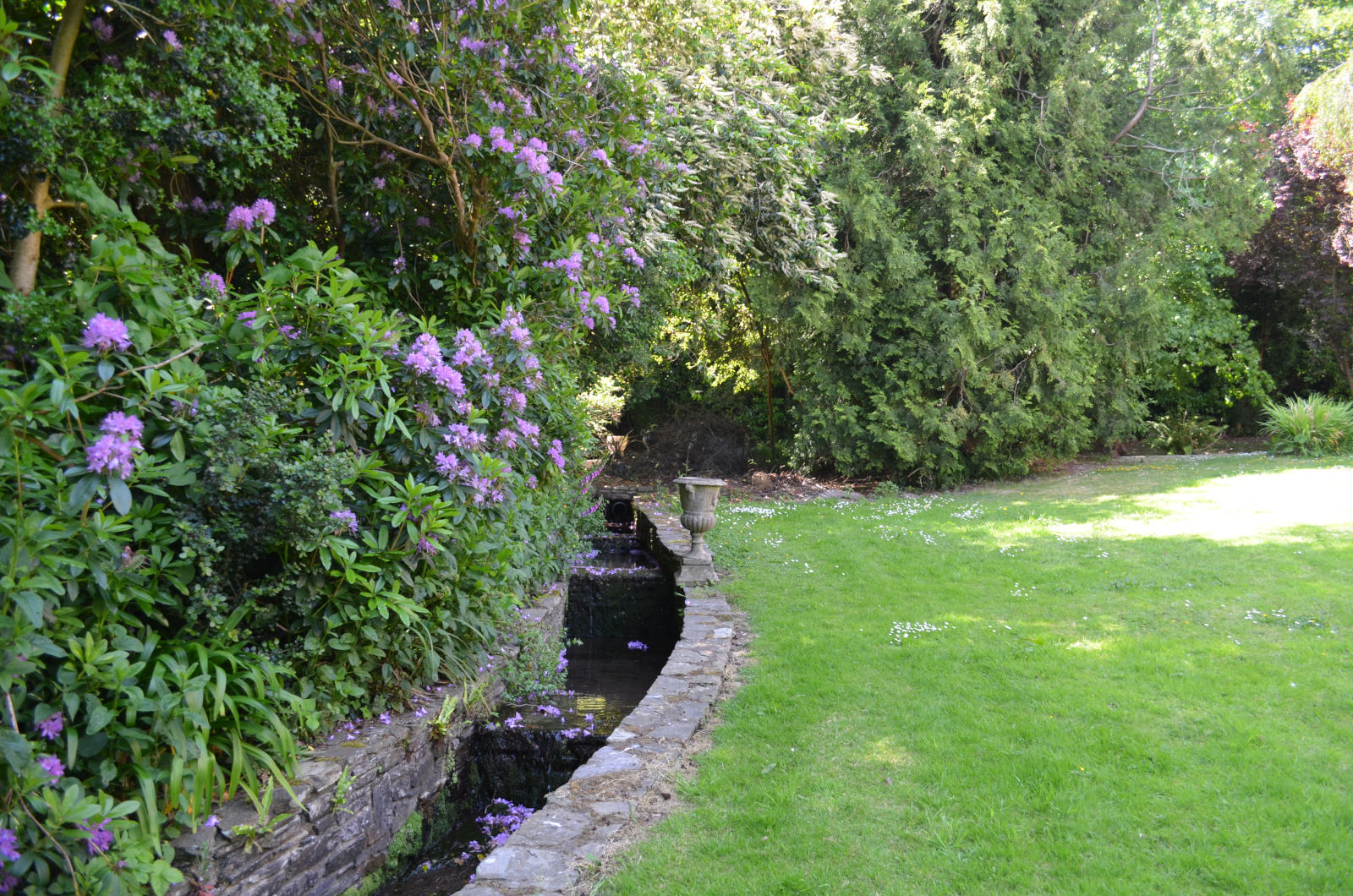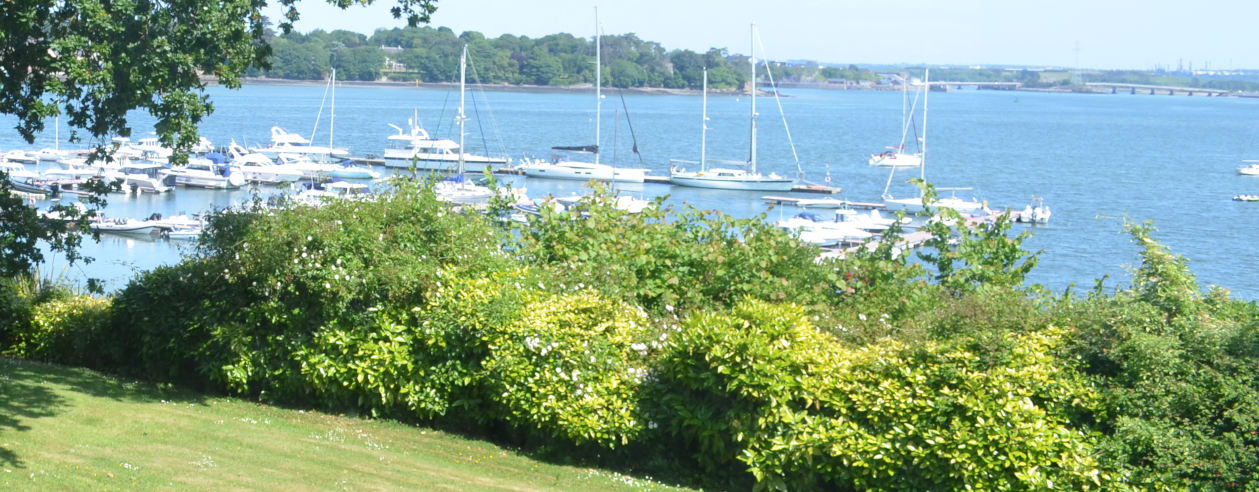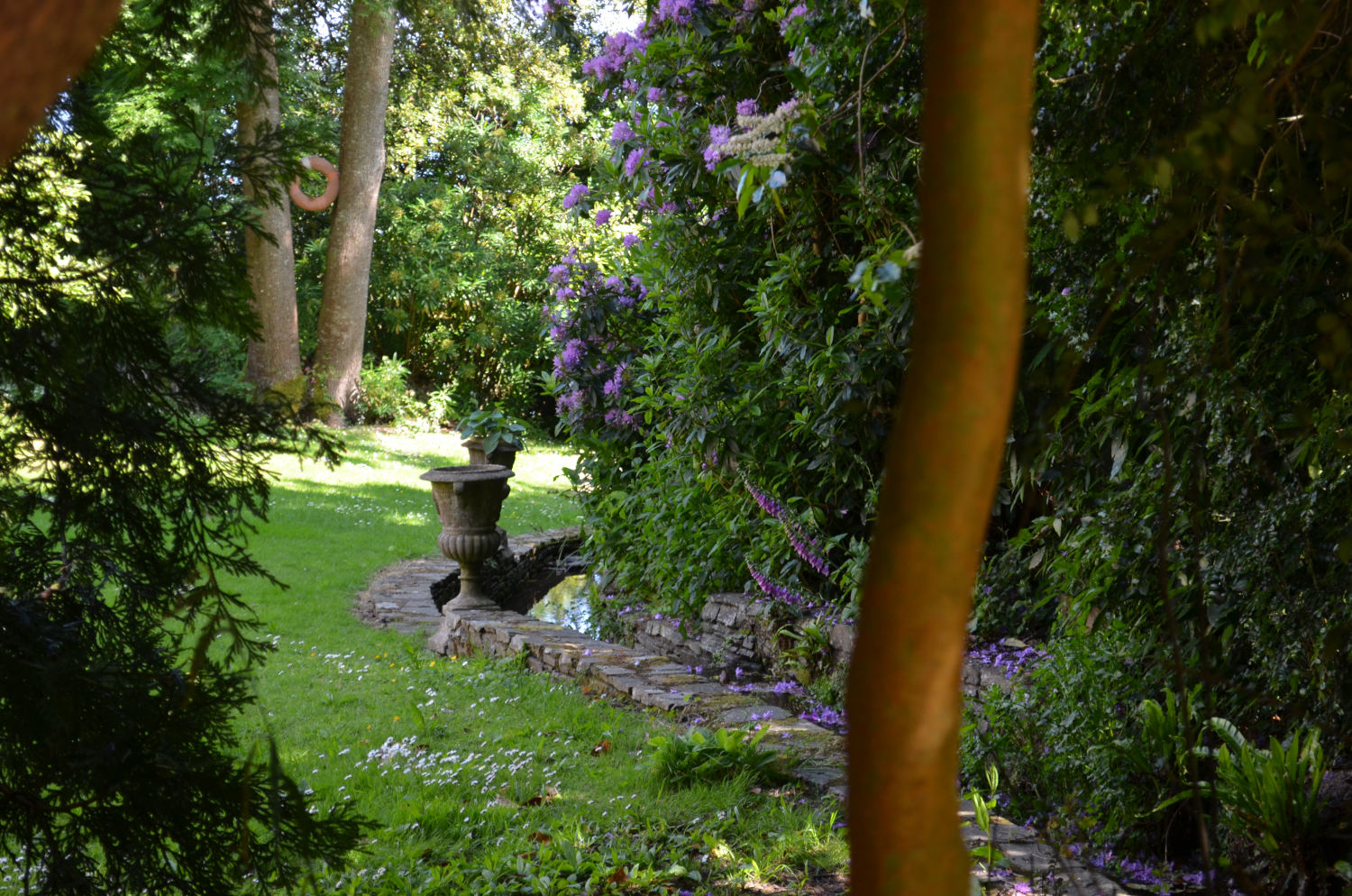THORNCLIFFE, Monkstown, Co.Cork.
(From National Inventory of Architectural Heritage):
Detached double-pile three-bay two-storey over basement and with dormer attic house, built 1868, having central gabled entrance breakfront with flanked by recessed bay with box window and chimneystack. Two-storey flat-roofed box window and oriel on cast-iron columns to side (south-west), and three-storey double-pile block to side (north-east). Gabled bay and flat-roofed 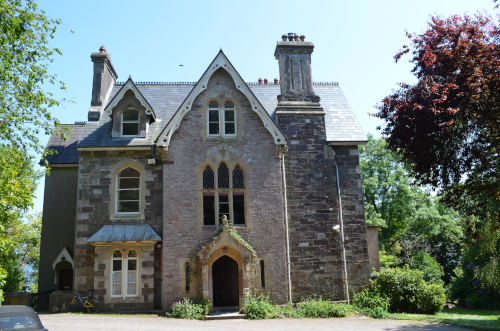 three-storey canted bay to rear (south-east). Pitched slate roofs with overhanging eaves throughout, having ceramic fleur-de-lis ridge cresting, rendered and tooled limestone chimneystacks with carved sandstone cornices including panelled stone chimneystack to north-west pitch. Pitched slate roofs to dormer windows. Cast-iron and uPVC rainwater goods. Ornate carved timber bargeboards to gables, supported by carved stone grape consoles to breakfront gabled bay of front elevation. Pink granite walls gabled entrance bay, flanked by polychrome sandstone and limestone walls to front. Rubble stone walls to south-west elevation, rendered walls to remaining elevations. Pointed arch window openings with tooled sandstone sills, surrounds, archivolts and two-over-two pane timber sliding sash windows to front and rear elevations. Square- and camber-headed window openings with yellow brick block-and-start surrounds and voussoirs to side (north-east) elevation and camber-headed window openings with chamfered stone sills to ground floor of rear elevation, having two-over-two pane timber sliding sash windows. Six-light pointed arch window opening with chamfered sandstone sill and block-and-start sandstone surround to first floor of front elevation, having tooled sandstone transoms, mullions and trefoil-heads to archivolt. Lead-lined quarry glazing and fixed pane windows. Incised trefoil modillions to archivolt surmounted by polychrome relieving arch. Bipartite and tripartite lancet window openings to front and side (south-west) elevations and gable of gabled bay to rear elevation. Tooled yellow sandstone block-and-start surround and archivolt to front elevation example, with polychrome relieving arch and timber casement windows. Tooled stone archivolts elsewhere with trefoil motifs and timber casement windows. Shouldered pointed arch window openings to dormer windows, having chamfered stone sills and archivolts with one-over-one pane timber sliding sash windows. Shouldered pointed arch door opening with chamfered reveals and voussoirs to front elevation within tooled stone gable-fronted porch canopy comprising ornately carved consoles surmounted by canopy with gable copings and carved finial. Double-leaf timber panelled door with limestone step and threshold. Square-headed door opening to front (north-west) elevation of double-pile block, having rendered deck bridge approach spanning basement area with timber balustrade. Timber battened door surmounted by gable-fronted timber canopy on carved brackets. Single-bay single-storey with dormer attic outbuilding to west, having pitched slate roof with timber clad eaves. Rubble stone walls with camber-headed loading bay to side (north-east) elevation, having timber battened shutter and rendered reveals. Camber-headed door opening to front (south-east) elevation having double-leaf timber battened doors with timber battened tympanum. Square-profile tooled stone gate piers to north, having tooled stone caps and double-leaf cast-iron gates.
three-storey canted bay to rear (south-east). Pitched slate roofs with overhanging eaves throughout, having ceramic fleur-de-lis ridge cresting, rendered and tooled limestone chimneystacks with carved sandstone cornices including panelled stone chimneystack to north-west pitch. Pitched slate roofs to dormer windows. Cast-iron and uPVC rainwater goods. Ornate carved timber bargeboards to gables, supported by carved stone grape consoles to breakfront gabled bay of front elevation. Pink granite walls gabled entrance bay, flanked by polychrome sandstone and limestone walls to front. Rubble stone walls to south-west elevation, rendered walls to remaining elevations. Pointed arch window openings with tooled sandstone sills, surrounds, archivolts and two-over-two pane timber sliding sash windows to front and rear elevations. Square- and camber-headed window openings with yellow brick block-and-start surrounds and voussoirs to side (north-east) elevation and camber-headed window openings with chamfered stone sills to ground floor of rear elevation, having two-over-two pane timber sliding sash windows. Six-light pointed arch window opening with chamfered sandstone sill and block-and-start sandstone surround to first floor of front elevation, having tooled sandstone transoms, mullions and trefoil-heads to archivolt. Lead-lined quarry glazing and fixed pane windows. Incised trefoil modillions to archivolt surmounted by polychrome relieving arch. Bipartite and tripartite lancet window openings to front and side (south-west) elevations and gable of gabled bay to rear elevation. Tooled yellow sandstone block-and-start surround and archivolt to front elevation example, with polychrome relieving arch and timber casement windows. Tooled stone archivolts elsewhere with trefoil motifs and timber casement windows. Shouldered pointed arch window openings to dormer windows, having chamfered stone sills and archivolts with one-over-one pane timber sliding sash windows. Shouldered pointed arch door opening with chamfered reveals and voussoirs to front elevation within tooled stone gable-fronted porch canopy comprising ornately carved consoles surmounted by canopy with gable copings and carved finial. Double-leaf timber panelled door with limestone step and threshold. Square-headed door opening to front (north-west) elevation of double-pile block, having rendered deck bridge approach spanning basement area with timber balustrade. Timber battened door surmounted by gable-fronted timber canopy on carved brackets. Single-bay single-storey with dormer attic outbuilding to west, having pitched slate roof with timber clad eaves. Rubble stone walls with camber-headed loading bay to side (north-east) elevation, having timber battened shutter and rendered reveals. Camber-headed door opening to front (south-east) elevation having double-leaf timber battened doors with timber battened tympanum. Square-profile tooled stone gate piers to north, having tooled stone caps and double-leaf cast-iron gates.
ARCHITECT: SIR THOMAS NEWENHAM DEANE (Born 1827, Died 1899)
Architect of Cork and Dublin. Thomas Newenham Deane was born on 15 Jun 1828 at Dundanion, Co. Cork,(1) the eldest son of THOMAS DEANE by his second wife, Eliza Newenham. He was educated at Rugby(2) and attended Trinity College, Dublin, from 1845 to 1849.(3) After receiving his BA degree from Trinity he became a pupil in his father's office in Cork. In 1851 both he and BENJAMIN WOODWARD , his father's assistant, became partners in the practice, which was re-named DEANE SON & amp; WOODWARD - or, in full, Sir Thomas Deane, Kt, Son & Woodward -, and soon afterwards, in October 1853,(4) Woodward and Deane set up a Dublin office at No. 3 Upper Merrion Street. After the death of Woodward in 1860 and up until the death of Sir Thomas Deane in 1871, the firm went under the name of Sir Thomas Deane & Son, although in fact the elder Deane's involvement in the practice had virtually ceased in the early 1850s. In 1878 Thomas Newenham Deane's eldest son, THOMAS MANLY DEANE , became his partner. The practice was known as THOMAS DEANE & amp; SON until 29 August 1890, when, after Deane was knighted at the opening of the National Library and Museum, it again became Sir Thomas Deane & Son.
In 1875, after the passing of the Act for the Preservation of National Monuments, Deane was appointed the first Superintendent of National Monuments.(5) Although doubts as to his qualifications for the post 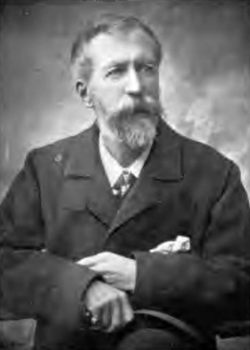 were raised at the time of the appointment,(6) he appears to have been conscientious in the discharge of his duties. In his memoir of Deane, THOMAS DREW writes of his 'genuine and patriotic devotion to his charge…for a mere nominal salary, visiting assiduously remotest places and exposed coasts and islands, and facing western seas in any seasons'. Deane's reports upon conservation work undertaken on national monuments appear in appendices to the annually published Reports of the Commissioners of Public Works, Ireland.(7)
were raised at the time of the appointment,(6) he appears to have been conscientious in the discharge of his duties. In his memoir of Deane, THOMAS DREW writes of his 'genuine and patriotic devotion to his charge…for a mere nominal salary, visiting assiduously remotest places and exposed coasts and islands, and facing western seas in any seasons'. Deane's reports upon conservation work undertaken on national monuments appear in appendices to the annually published Reports of the Commissioners of Public Works, Ireland.(7)
From an early date, Deane was interested in painting, and his father even feared that he might abandon architecture for painting as a career.(8) Between 1863 and 1898 he was a regular exhibitor at the RHA. His earliest exhibits consisted of architectural designs but these were soon exceeded by numerous sketches of Irish and continental views.(9) Deane was one of four architects from Ireland who attended the Architects' Conference in London in 1871.(10). He believed that architects should have a broad education which included fine art and the study of the antique, and in 1875 argued for the establishment of 'a good technical School of Art, where the smith, the carpenter, the carver, the weaver, the builder, the decorator and the architectural student may see the best examples of such objects as may help him to form right conclusions as to what is right and wrong, beautiful and ugly'.(11) When the establishment of a museum of science and art was under discussion in 1876, he supported the idea of amalgamating the collections of the Royal Dublin Society and the Royal Irish Academy.(12) He was on the Fine Arts & Manufactures Committee of the Royal Dublin Society,(13) and in 1878 the Society appointed him its representative on the panel of three judges which was to be responsible for awarding the Taylor Art Scholarships.(14) In January and February 1889 he gave a series of lectures on architecture at Leinster House under the auspices of the Department of Science and Art.(15)
Playing a public role did not come naturally to Deane, who, according to O'Dwyer, suffered from a speech impediment and shyness. 'By his force of character Deane became one of the most widely known of men in Irish society,' Drew wrote in his memoir, 'though he was not of it in one sense. He was not a gregarious man; and absorbed in pursuit of his practice, and living a retired life, he maintained friendship with brother architects and membership of the Irish Institute of Architects and of the Royal Hibernian Academy of Arts, although taking little interest in their corporate acts'.(16) 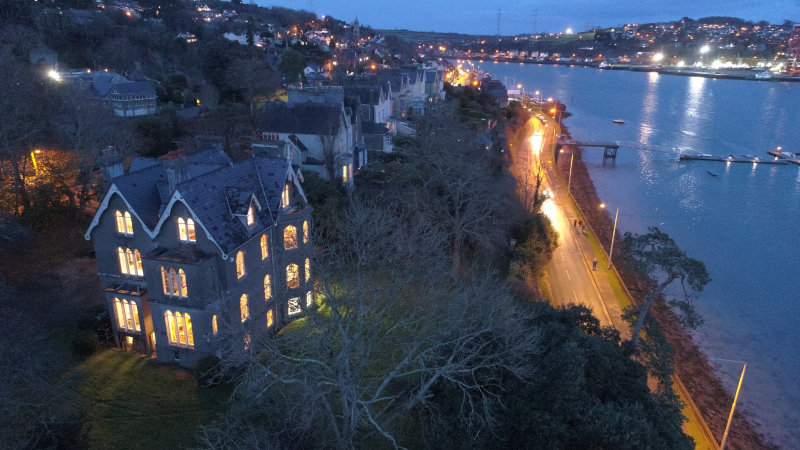 Deane died suddenly in his office on St Stephen's Green, into which he had only just moved, on 8 November 1899(17) and was buried in Deansgrange cemetery,(18) where his son THOMAS MANLY DEANE , designed and erected a cross in his memory.(19) He left an estate valued at £13,178.15s.1d.(20) He had married Henrietta, fourth daughter of Joseph Manly of Ferney, Co. Cork, and his wife Deborah (née Newenham) on 29 January 1850, by whom he had seven sons and a daughter. Lady Deane, who was born on 18 December 1827, died on 27 Febrary 1911.(21) Thomas Manly Deane carried on his father's practice.
Deane died suddenly in his office on St Stephen's Green, into which he had only just moved, on 8 November 1899(17) and was buried in Deansgrange cemetery,(18) where his son THOMAS MANLY DEANE , designed and erected a cross in his memory.(19) He left an estate valued at £13,178.15s.1d.(20) He had married Henrietta, fourth daughter of Joseph Manly of Ferney, Co. Cork, and his wife Deborah (née Newenham) on 29 January 1850, by whom he had seven sons and a daughter. Lady Deane, who was born on 18 December 1827, died on 27 Febrary 1911.(21) Thomas Manly Deane carried on his father's practice.
Deane's pupils and assistants included EDWARD GUY DAWBER , FREDERICK MORLEY , PATRICK F. O'SULLIVAN and JOHN HOWARD PENTLAND.
AAI: founder member; special committee meeting held on 10 November 1899 'to express their sense of the great loss they & the architectural profession generally had sustained'.(22)
GLFI: candidate for admission to Lodge 141, Dublin, 6 March 1863.(23)
Inst.CEI: hon. member, 1891.(24)
RHA: associate, 18 July 1861; member, 18 April 1864.(25)
RIAI: fellow, 1866;(26) council member, 1867-8,1871-5;(27) vice-president, 1870-1;(28) re-elected member, 9 April 1883;(29) fellow, 12 December 1885.(30)
RIBA: fellow, 1863;(31) council member, 1874-5;(32) resigned 1885.(33)
RSAI: elected member, 7 January 1863, proposed by Charles H. Foot;(34) proposed as fellow, 1898.(35)
Addresses:(36) Work: 3 Upper Merrion Street, Dublin, 1853-1899; 37 St Stephen's Green, 1899.(37)
Home: 3 Upper Merrion Street, Dublin, 1853-1868; Dorset Lodge, Killiney, 1869 until death.
See WORKS.
For the purposes of this database all works by Thomas Newenham Deane between 1861, when Woodward died, and 1878, when Thomas Manly Deane joined his father as a partner, are listed under THOMAS NEWENHAM DEANE . From 1861 until 1871 the practice was officially called Sir Thomas Deane, Kt, and Son despite the fact that Sir Thomas Deane had withdrawn from active participation in the 1850s.
References
All information in this entry not otherwise accounted for is from the genealogical account of the Deane family in IB 43, 13 Feb 1901, 633-635, which forms the basis of an article in The Cork Historical and Archaeological Society Journal 21 (Oct-Dec 1915), 180-186, from Hector Deane, who owns a Deane family tree compiled by Thomas Manly Deane (Aug 2009), and from Frederick O'Dwyer, The Architecture of Deane and Woodward (Cork University Press, 1997), 18-20, 394, &c.. Another account of Deane's early life and architectural career is in Eve Blau, Ruskinian Gothic: the architecture of Deane and Woodward 1845-1861 (Princeton, 1982), and a good summary of Deane's architectural career is in the memoir by Thomas Drew in RIBAJ 7 (1900), 48-49; other biographies are in IB 41, 1 Dec 1899, 196, and in the Oxford DNB (the entry in the original DNB was by Deane's son-in-law, C.L. Falkiner). A bronze bust of Deane by John Hughes is in the National Gallery of Ireland. A portrait medallion by Thomas Manly Deane was exhibited at the RHA in 1912 (no. 309). A portrait photograph accompanies the article fromThe the Cork Historical and Archeological Society Journal mentioned above (roproduced by O'Dwyer, lo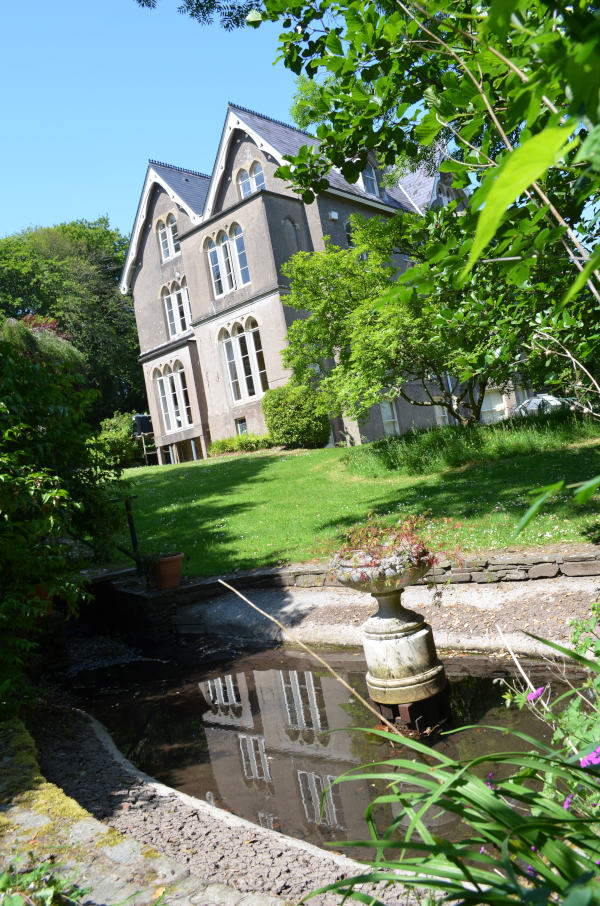 c. cit., above). Another is in Building News, 28 Feb 1890, 'Contemporary British Architects' series (not seen).
c. cit., above). Another is in Building News, 28 Feb 1890, 'Contemporary British Architects' series (not seen).
(1) IB 41, 15 Nov 1899, 180.
(2) Who was Who 1897-1916, 188; he had previously attended a school in Blackrock, Cork (see J.F. Fuller, Omniana (1916), 42, and entry on Fuller).
(3) Alumni Dublinenses, 219.
(4) Blau, 27.
(5) IB 17, 1 Jul 1875, 184; B 33, 10 Jul 1875, 631.
(6) IB 17, 15 Jul 1875, 193.
(7) For summaries of, illustrations from and comments on these reports and other references to Deane in his capacity of Superintendent of National Monuments see also: IB 18, 1 Sep 1876, 249-50,263-4; 19, 15 Feb,1 Jun,15 Aug 1877, 52,157,233-4; 20, 1 Aug,15 Sep,1 Oct 1878, 217,259-60,275-6; 21, 15 Jul,1,15 Aug,1 Sep 1879, 208,225-6,243-4,261-2; 30, 15 Feb 1888, 44(illus.); 36, 1 May 1894, 108; B 34, 2 Sep 1876, 861; 35, 31 Mar 1877, 327; 36, 7 Sep 1878, 929; Architect 17, 24 Feb 1877, 125; 18, 21 Jul 1877, 32-33; 20, 17 Aug 1878, 84; 22, 12 Jul 1879, 21(illus.); 24, 14 Aug 1880, 104; 27, 28 Jan,23 Sep,11 Nov 1882, 59,?(illus.),?(illus.); JRSAI 36 (1894), 108; RIA Proceedings 16 (1882), 201; 17 (1886), 161; 19 (1893), 100; 24 (1894), 92.
(8) Blau, 28.
(9) An album of watercolour views and studies by Deane is in the National Gallery of Ireland (No. 6346).
(10) B 29, 27 May 1871, 397.
(11) IB 17, 15 Dec 1875, ?.
(12) IB 18, 15 Apr 1876, 114.
(13) IB 11, 15 Apr 1869, 91.
(14) B 36, 7 Sep 1878, 944.
(15) IB 31, 15 Jan 1889, 25.
(16) RIBAJ 7 (1899-1900), 49.
(17) IB 41, 15 Nov,1 Dec 1899, 180,196.
(18) Irish Times, 10 Nov 1899.
(19) IB 43, 24 Oct 1901, ?(illus.).
(20) IB 42, 15 Feb 1900, 285.
(21) IA & C, 1, 11 Mar 1911, 91.
(22) Irish Times, 10 Nov 1899.
(23) GLFI archives.
(24) TICEI 22, 16 Dec 1891, ?.
(25) Strickland; but cf. B 19, 24 Aug 1861, 585 which says that he was elected associate 1 Aug 1861.
(26) RIAI council minutes, 21 Jun 1866, 56,190, 15 Nov 1866, 196, ordinary meeting minutes 20 Dec 1866, 198.
(27) Typescript lists of RIAI officers in IAA.
(28) See note 24, above.
(29) RIAI council minutes, 7 Apr 1883, 226.
(30) RIAI council meeting minutes, 9 Nov 1885, 245, general meeting minutes, 12 Dec 1885, 281.
(31) RIBA list of members, 1875.
(32) RIBAJ 25 (1874-5).
(33) RIBAJ 7 (1899-1900), 48-49.
(34) JRSAI 7 (1862-1863), ?.
(35) JRSAI 28 (1898), 83.
(36) Thom's Directories.
(37) O'Dwer, op. cit., above, 394.

